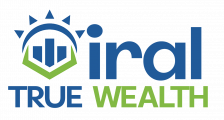Many modern businesses succeed with the right equipment. The correct tools may enhance productivity and competitiveness. Equipment finance can provide these necessities. How much can equipment financing help? To help firms understand Equipment Financing, this article examines its merits and cons.
Understanding Equipment Finance
Businesses can borrow money to buy equipment with equipment financing. Vehicles, manufacturing gear, office computers, and more can be financed with this option. Equipment is usually collateral for loans. This protects the lender and generally gives the borrower better loan terms.
Quality Equipment Access
Equipment financing allows businesses to buy better equipment than they could with cash. A construction company may finance a high-tech excavator that improves job site performance and safety, resulting in additional projects and money.
Tax advantages
Tax benefits of equipment financing are also considerable. Under IRS Section 179, firms can deduct the whole cost of financed equipment as a business expense in certain areas. This deduction reduces taxable income, saving a lot. Equipment loans often offer tax-deductible interest, which boosts their financial appeal.
Flexibility, Customization
Businesses can customize equipment financing arrangements to meet their needs. Repayment plans, interest rates, and loan maturities vary per lender. Businesses with seasonal income changes or quick growth and change can benefit from this flexibility.
Credit Line Preservation
Equipment financing lets businesses use their credit lines elsewhere. Companies might use loans for operating capital, emergency bills, or investments instead of significant equipment purchases. Strategic credit use can boost a company’s financial stability and agility.
Possible Drawbacks
Equipment financing has several benefits, but organizations must weigh several issues before continuing.
Interest and Costs
Equipment financing has interest and other charges like any loan. The borrower’s creditworthiness, equipment type, and loan period affect financing costs. To choose the most cost-effective financing solution, businesses should analyze choices and assess the total cost of ownership.
Decline and Obsolescence
Technology can quickly become obsolete in some businesses, and equipment depreciates. Businesses must consider depreciation and obsolescence when choosing a finance term. To prevent paying for a non-productive asset, match the loan term to its useful life.
Equity and Ownership Considerations
Depending on the financing, the lender may keep the equipment until the loan is paid off. If the business fails on the loan, it could lose vital equipment. Leasing may offer less equity-building than outright purchases.
Required Qualifications
Equipment financing usually involves a thorough financial analysis of the firm. Credit history, revenue, and debt are considered by lenders. Start-ups and others with bad credit may have trouble getting good finance.
Effect on Financial Statements
Equipment financing affects firm finances. Equipment is an asset, loans liabilities. The company must manage the impact on its balance sheet and adhere with lender covenants and restrictions, although this can provide a clearer financial picture.
Conclusion
Equipment finance can help businesses buy essentials without depleting cash reserves. Companies can maintain cash, access high-quality tools, and benefit from tax breaks by spreading out equipment purchases. Before signing a loan agreement, firms must weigh the prices, terms, and financial impact. Business demands, finances, and strategic goals determine equipment financing assistance. Understanding the pros and downsides helps firms make smart decisions that boost operations and long-term performance.




